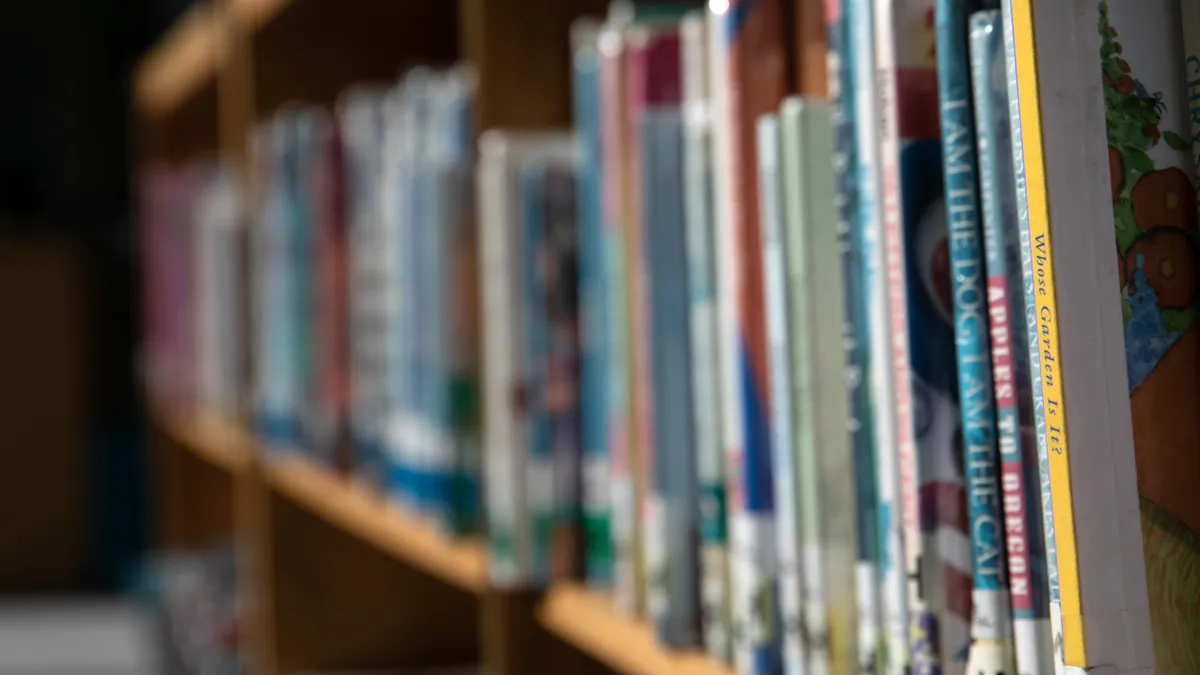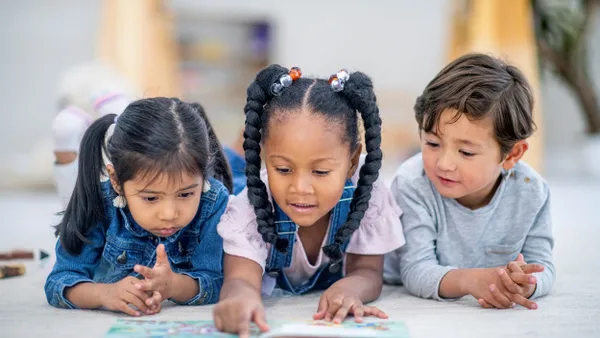Dive Brief:
- Prominent literacy education expert Lucy Calkins, a professor at Columbia University’s Teachers College, recently made a significant revision to her curriculum to include a deeper embrace of phonics and the science of reading. Additional revisions included encouraging educators to consider diverse viewpoints when selecting reading curricula for students.
- Debate over the diversity recommendations, however, have held up the new curriculum, intended for students in kindergarten through 2nd grade, because some state education laws restrict how race and gender can be taught in public schools. But education experts believe the new guidelines are key, as expanding the voices students read and are exposed to can build a greater sense of support and engagement.
- “It is very important to consider diverse viewpoints when selecting reading materials,” said Kathy Lester, president of the American Association of School Librarians. “Doing so leads to higher student achievement. There is evidence that if students can see themselves in texts that this will lead to higher engagement and motivation. In addition, there is research that shows that reading motivation is connected to reading achievement.”
Dive Insight:
That Calkins' new curriculum now includes phonics was in itself a notable shift from the approach her “Units of Study” curriculum previously promoted, which is referred to as “balanced literacy.” That approach instructed teachers to read aloud from children’s books and encourage students to choose “just right” books aligned to their reading levels and interests, while focusing more on identifying details like theme, character and plot than on sounding out words, according to The New York Times.
Some literacy experts see phonics as a way to bring more explicit and specific reading instruction into the classroom. When introduced to young children, these decoding tools can help build a crucial literacy foundation for future success.
Additionally, educators have a chance to intervene earlier when young students learn how to decode and unlock reading in earlier grades. They can locate students who need additional support, ensuring more pupils receive the intervention they need to continue on their educational journey.
“Lucy Calkins’ recognition of the science is an important step for recalibrating literacy instruction in U.S. schools,” said Amelia Malone, director of research and innovation for the National Center for Learning Disabilities. “To be able to comprehend challenging text, we must begin early literacy instruction teaching students how to unlock the code of reading.”
To build a foundation for students to excel, Malone said “explicit and systematic phonics instruction is imperative.”
“It also allows a more seamless transition for struggling students receiving intensive instruction and students receiving special education services,” Malone said.
But Calkins’ publisher, Heinemann, has held the revised curriculum’s publication over concerns that the way the materials approach race, gender and identity in literature may run against educational laws in more than 15 states, The New York Times reports.
The guidelines that raised concern asked educators to consider students’ race and identities in reading selections and mentioned the acronym BIPOC, which stands for Black, Indigenous and people of color.
Edits initially started on the materials to satisfy requirements of various state laws until other authors published by Heinemann started protesting whether those changes would best serve diverse student populations.
Florida is one state where parents can sue school districts for discussing concepts such as White privilege or transgender identities in classrooms. But Gov. Ron DeSantis has been a supporter of phonics, which the new curriculum includes. Calkins, who has said she is opposed to making revisions on diversity and equity, has offered to send shortened versions of the lesson plans to schools while the review process continues.
For Lester, exposing students to other viewpoints expands their emotional connections, developing respect and acceptance of others through stories and materials.
“Not only do children need to see themselves in literature, they also need to see others and worlds that are different from their own, and they build empathy with sliding glass doors — stepping into other worlds,” Lester said.














